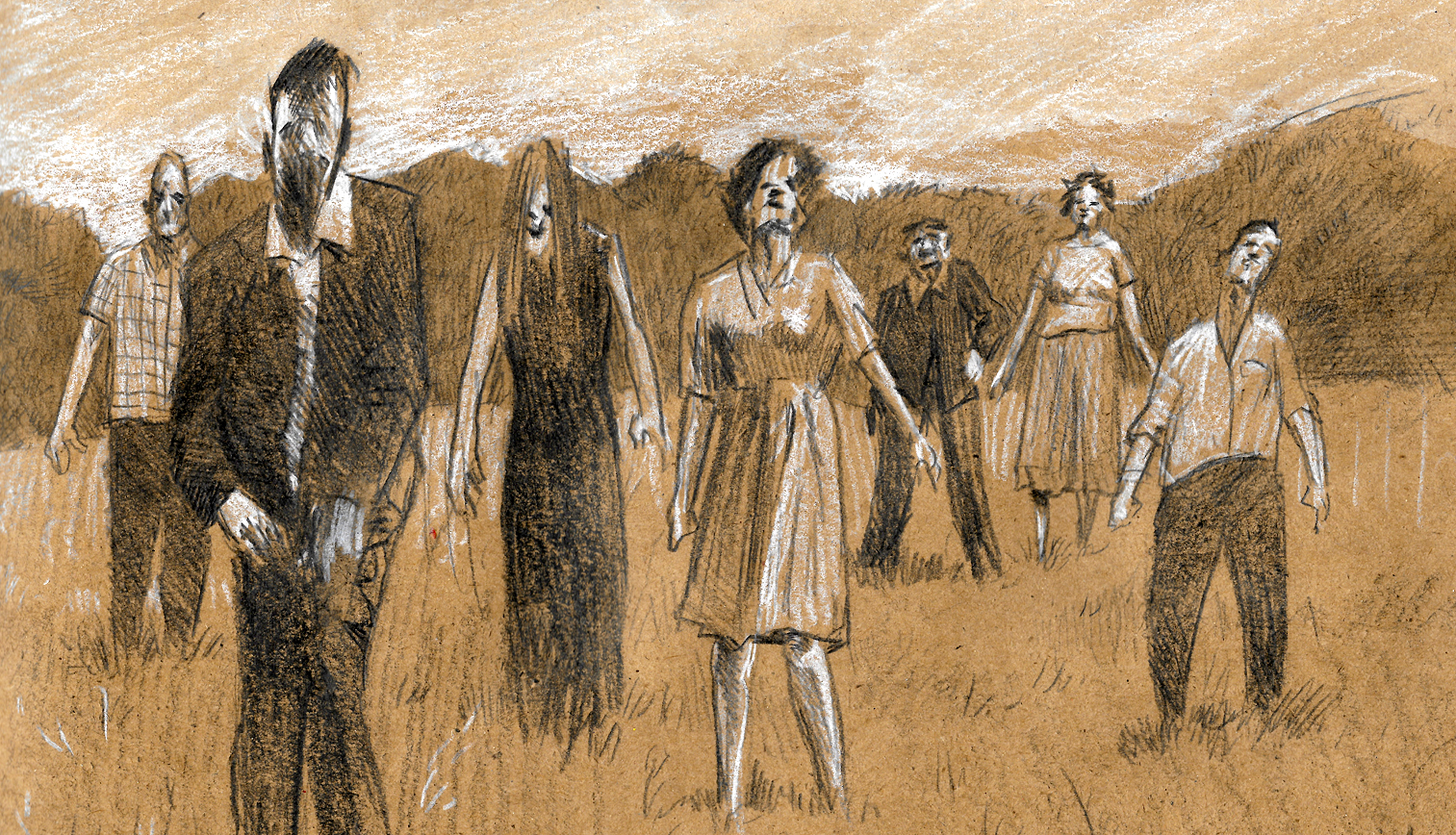The evil now resides within our own region and we ourselves are the threat
In the immensely vast and expansive canon of the horror genre, there are perhaps few films as significant as George A. Romero’s 1968 landmark title Night of the Living Dead.
Romero’s first ever feature-length film was responsible for the creation of the modern day zombie; the shuffling, re-animated, flesh-eating ghoul killed only by a blow to the head. The filmmakers’ gritty, uncompromising vision helped usher in a new wave of horror films that shifted their focus from the fantastical to the more realistic, grounded and gruesome.
Night of the Living Dead was released at the tail end of a decade marked by cultural phenomena and paints an acutely unsettling portrait of a country marred by civil unrest. In the years following the film’s release, Romero has spoken extensively on how Night was influenced by the era’s political climate. In a 2010 interview with film critic Peter Keough, Romero called his zombie films “snapshots of the time they were made.”
With Night, Romero set out to provoke and to reflect on the qualms and anxieties of the American public, while simultaneously offering a grim prediction of where things were headed.
The script for Night was developed by Romero and collaborator, John Russo, over the course of three days in 1967. That same year, a series of 159 race riots exploded across the United States in what became known as the “Long, hot summer of 1967.” Concurrently, the Vietnam War continued to rage on, being regularly broadcast to homes across America in vivid, graphic detail. As author Geoff King details in his book New Hollywood Cinema: An Introduction, the image of America as a place of freedom and democracy had been irreparably damaged, and lead to widespread anti-authoritarian and countercultural sentiments across the western world.
The collective impact of these events in a relatively short period of time influenced many filmmakers during the latter half of the decade, Romero included, whose criticisms come across in many of the film’s creative choices and thematic elements. Perhaps most telling of all is Romero’s decision to have the film take place within America. Horror movies prior to Night of the Living Dead had always been set in far-off, unfamiliar lands.
As film critic Robin Wood reflects on in his book Hollywood from Vietnam to Reagan, the foreign threat in horror during this time period suggests that, while evil does exist, it is certainly not American.
In Night, the evil now resides within our own region, we ourselves are the threat. Despite its reputation as the progenitor of zombie films, Night never outright refers to its monsters as “zombies.”
For Romero, the movie’s ghouls were always intended to be dead neighbours, fellow citizens turned violent. Some, such as critic Douglas Winter, have even drawn parallels between the films’ zombies and soldiers fighting in the Vietnam War; violent, eager to kill and lacking in individuality or moral values. This theory is supported by the filmmakers’ decision to film the movie in black and white, mimicking the realism and grittiness of wartime newsreels.
The socio-political context behind the film has also allowed for readings through the lens of race relations during the 1960s. Of course, lending credence to this interpretation is the casting of Duane Jones, a person of colour, in the film’s lead role. With the Jim Crow laws having been abolished only a few years prior, this was indeed a bold move by the filmmakers.
Though Romero has stated that this decision was merely based on Jones’ acting abilities, having a person of colour in a lead role alongside a cast of white actors was incredibly uncommon at the time.
Night’s ending, in which Ben survives until sunrise only to be killed by a group of vigilante rednecks, remains startling to this day and, as noted by slate.com writer Caetlin Benson-Allott, is shockingly reminiscent of lynch mob photos. Critic Ben Hervey, in his book Night of the Living Dead (BFI Film Classics), states that Romero shot the ending sequence with politics consciously in mind, suggesting that this was a parallel made intentionally.
Over 50 years later, Night of the Living Dead remains a startling depiction of a society at war with itself, one fraught with distress and anger. To dismiss it as your run-of-the-mill zombie affair would be doing the film a great injustice. Romero and company soaked in the influence of a tumultuous time to craft an enduring classic that still has a lot to say. In times as divisive and uncertain as these, Romero’s opus is still as relevant as ever.
Night of the Living Dead is playing at Cinéma Moderne as part of its“Halloween at Cinéma Moderne” series. Screenings take place on Oct. 30 and 31 at 9 p.m. Tickets can be purchased online or at the ticket counter for $11.50. For more details, visit them online at cinemamoderne.com or on location at 5150 St-Laurent Blvd.
Graphic by @joeybruceart




